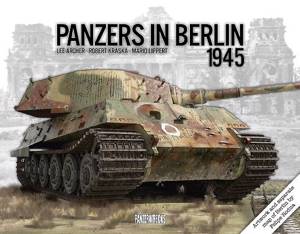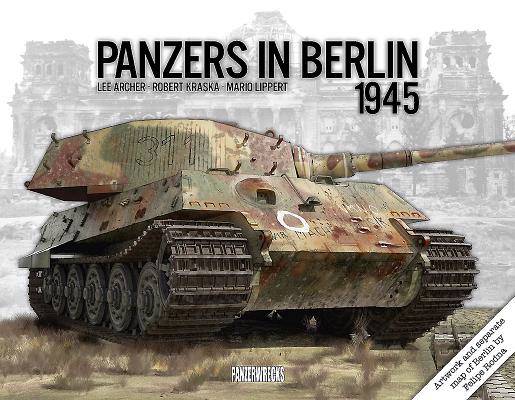
Je cadeautjes zeker op tijd in huis hebben voor de feestdagen? Kom langs in onze winkels en vind het perfecte geschenk!
- Afhalen na 1 uur in een winkel met voorraad
- Gratis thuislevering in België vanaf € 30
- Ruim aanbod met 7 miljoen producten
Je cadeautjes zeker op tijd in huis hebben voor de feestdagen? Kom langs in onze winkels en vind het perfecte geschenk!
- Afhalen na 1 uur in een winkel met voorraad
- Gratis thuislevering in België vanaf € 30
- Ruim aanbod met 7 miljoen producten
Zoeken
Omschrijving
Panzers in Berlin 1945 is a study of German armor during the Battle of Berlin in April and May of 1945 and is the first book to examine the role of Panzers in this final battle.
This 392-page book is lavishly illustrated with 360 mostly unpublished photographs that take the reader from the retreat at Seelow to collecting wrecks from central Berlin. Years of painstaking research and a network of like-minded researchers from across the globe have enabled the authors to piece together the who, where, and why, including lists of wrecks documented by the military government in the immediate post-war period.
In addition to informative text and hundreds of photos, many pages include a QR code - just point your smartphone camera at the code to show the scene today in Google Street View, while a separate map shows Berlin as it was in 1945 and plots the locations of the wrecks.
To complete the coverage, acclaimed military artist Felipe Rodna has created sixteen pages of exquisite specially-commissioned artwork.
This 392-page book is lavishly illustrated with 360 mostly unpublished photographs that take the reader from the retreat at Seelow to collecting wrecks from central Berlin. Years of painstaking research and a network of like-minded researchers from across the globe have enabled the authors to piece together the who, where, and why, including lists of wrecks documented by the military government in the immediate post-war period.
In addition to informative text and hundreds of photos, many pages include a QR code - just point your smartphone camera at the code to show the scene today in Google Street View, while a separate map shows Berlin as it was in 1945 and plots the locations of the wrecks.
To complete the coverage, acclaimed military artist Felipe Rodna has created sixteen pages of exquisite specially-commissioned artwork.
Specificaties
Betrokkenen
- Auteur(s):
- Illustrator(s):
- Uitgeverij:
Inhoud
- Aantal bladzijden:
- 392
- Taal:
- Engels
- Reeks:
- Reeksnummer:
- nr. 2
Eigenschappen
- Productcode (EAN):
- 9781908032164
- Verschijningsdatum:
- 19/10/2019
- Uitvoering:
- Hardcover
- Formaat:
- Genaaid
- Afmetingen:
- 274 mm x 213 mm
- Gewicht:
- 1791 g

Alleen bij Standaard Boekhandel
+ 167 punten op je klantenkaart van Standaard Boekhandel
Beoordelingen
We publiceren alleen reviews die voldoen aan de voorwaarden voor reviews. Bekijk onze voorwaarden voor reviews.









